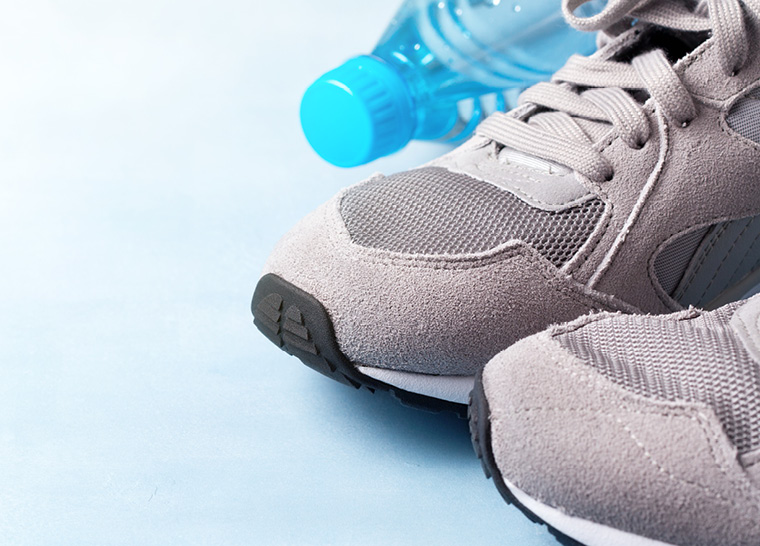
Have you ever noticed people slipping in and out of the local shopping centre long before it opens? Malls across Canada don’t just offer merchandise and food courts: many have mall walking programs where adults can combine socializing with a dose of health-boosting exercise. While Amica residents enjoy convenient in-house amenities and activities ranging from walking clubs and exercise classes to a fitness centre, indoor pools and paved walking trails, mall walking is a great fitness option for older adults.
Health benefits of walking
Is walking good for older adults? Absolutely. Walking requires no training or special equipment, and it’s easy to get started even if you’re currently inactive. Stacks of research show the health perks of regular physical activity, including brisk walking. Compared with sedentary adults, those who stay active lower their risk of depression, heart disease, stroke, type 2 diabetes, breast cancer and colon cancer. Daily exercise can also improve mobility, sleep and bone health, help manage weight, preserve independence, reduce the risk of falls and generally make you feel better. Exercise is also believed to help postpone cognitive aging and dementia.
Mall walking benefits
Regular mall walkers know the advantages of this free, non-competitive and accessible exercise for all fitness levels. Most shopping centres are designed to be barrier-free for people across many ages and abilities, with wheelchair ramps, handrails and more. Parks are absolutely lovely when the weather is nice but malls offer year-round peace of mind. First, you’re walking on consistent walking surfaces instead of potentially uneven trails or pavement, and you don’t need to deal with spring rainfalls, summer heat waves or icy winters. Mall walking is safe, secure and quiet without the noise, pollution and hazards of traffic or a fear of walking alone. Good lighting, security and video surveillance makes mall walking attractive to seniors who may feel safer walking indoors. Whether you need a rest or a restroom, you’ll find benches and accessible washrooms throughout your walk. In the unlikely event you need medical help, you’ll be able to easily get emergency assistance.
Mall walking tips and workouts
- Wear comfortable shoes: Try cushioned, flexible, low-heeled soles to soften the impact of walking on concrete floors.
- Warm up gradually: Begin at a gentle pace for three to 10 minutes. When your body feels warmed up, take a moment to stretch any muscles that might feel tight.
- Watch your stride: Instead of taking longer steps, keep your stride fast and short. Long strides can create more strain on your feet and legs.
- Swing those arms: Keep your elbows at your sides bent at 90 degrees, pumping your arms from the shoulder. This helps quicken your pace and includes your upper body in the workout.
- Count your steps: Some malls post distance markers on the walls or floors that you can use to note your weekly distance. Set a goal and wear a pedometer to see how many steps you take, or try a mobile app and carry your phone for tracking. Target 5,000 daily steps in the beginning; can you work up to 10,000?
- Consider adding intervals: You can boost the intensity of a mall walking workout by walking fast enough that you are breathing harder than usual. If you’re new to exercise, you might wish to alternate faster and easier paces for 30 seconds at a time. As you get more comfortable with the extra effort, you can gradually build up to intervals lasting up to 10 minutes. Or walk as fast as you can for 30 seconds, return to a regular pace for up to two minutes, then repeat.
- Add stairs or ramps: Since walking uphill increases the intensity, those in good health might try walking up a ramp or taking the stairs during a workout, using the handrail for safety.
- Try trekking poles: Incorporating Nordic poles on your walk helps enlist the muscles of the core, chest, arms and upper back and is often promoted at seniors’ centres as a safe and effective form of exercise. Ask if Nordic poles or Nordic walking are permitted at your mall. You can purchase rubber-tipped walking poles (they resemble those used for cross-country skiing), at outdoor and sporting goods stores.
- Aim for 150: To improve your health and functional abilities, health experts recommend older adults aged 65 and up get at least 150 weekly minutes of moderate to vigorous aerobic physical activity — which includes walking and mall walking — in 10-minute bouts or more. Try a brisk walk 30 minutes five days a week, or go for an hour at least three times a week.
- Bring a water bottle: Stay hydrated, especially if you’re doing longer walks.
- Take a break: Stop exercising or sit down if you feel any pain during your walk.
- Make it a date: Invite a spouse or friend to join you for a coffee or a healthy breakfast before or after a walk.
- Savour the camaraderie: Exercise routines can be easier to keep if you stay active with people who share your passion. If you decide to try mall walking, you’ll probably start making friends with other mall walkers. Socializing while exercising? That’s a win for the body and mind.
Find out how residents are enjoying great amenities, activities, flexible dining and personalized service at Amica residences. Schedule a private tour today.
